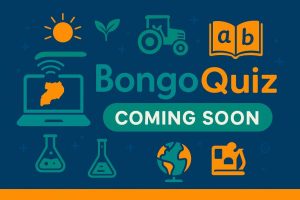Introduction
Geography, the study of Earth’s landscapes, environments, and the complex relationships between humans and their surroundings, divides broadly into two main branches: Physical Geography and Human Geography. This fascinating discipline not only helps us understand the physical layout of the planet but also examines how human culture interacts with the natural environment. By delving into these branches, we gain insights into the delicate balance that sustains life and shapes our world.
Physical Geography: Understanding Earth’s Natural Landscape
Physical Geography focuses on the natural processes and features of the Earth, such as climates, landforms, vegetation, water bodies, and soils. It seeks to understand the dynamics of Earth’s physical landscape and the processes that shape them over time. Key areas of study within this branch include:
• Climatology and Meteorology: These fields explore the patterns and effects of weather and climate, including the study of atmospheric conditions, precipitation, and temperature.
• Hydrology and Oceanography: These areas examine the movement, distribution, and quality of water on Earth, including the study of oceans, rivers, lakes, and groundwater.
• Geomorphology: This focuses on the formation and evolution of Earth’s landforms, from mountains and valleys to plains and deserts.
• Biogeography: The study of the distribution of species and ecosystems in geographic space and through geological time.
Through understanding Physical Geography, we learn how natural forces shape our planet and influence environmental conditions.
Human Geography: The Study of Human Spaces
Human Geography explores the diverse ways in which cultures, economies, and societies are intertwined with the physical environment. It addresses how human behavior affects the environment and how the environment influences human activities. Major areas include:
• Cultural Geography: Investigates how culture—beliefs, traditions, and customs—is spatially distributed and impacts landscapes.
• Economic Geography: Examines the distribution of economic activities and how they relate to geographic location, including trade, industry, and resources.
• Political Geography: Studies the spatial distribution of political processes and how they impact regions and borders.
• Urban Geography: Focuses on the development and organization of cities and towns, considering the spatial aspects of urban life.
Human Geography provides insights into the complex interactions between humans and their environment, highlighting the importance of sustainable development and planning.
Conclusion
The branches of Geography offer a comprehensive framework for understanding the world around us. By studying both Physical and Human Geography, we gain a deeper appreciation of our planet’s diversity and complexity. This knowledge is crucial for addressing global challenges, from environmental conservation to urban planning, and fosters a more sustainable and equitable future for all. Whether you’re drawn to the physical beauty of the Earth’s landscapes or fascinated by the patterns of human settlement and culture, Geography opens a window to understanding the intricate web of interactions that shape our world.
Key Takeaways: Understanding the Branches of Geography
• Distinct Branches: Geography is broadly divided into Physical Geography, which deals with the Earth’s natural processes and features, and Human Geography, focusing on human activities and their impact on the world.
• Interconnected Disciplines: Despite their distinctions, Physical and Human Geography are deeply interconnected, each offering insights that help explain patterns and processes in the other.
• Real-World Applications: Geography’s applications are vast, affecting urban planning, environmental conservation, disaster management, and global economic strategies. It provides a framework for addressing many of the world’s most pressing challenges.
• Technology’s Role: Advances in technology, particularly in Geographic Information Systems (GIS) and remote sensing, have revolutionized the field, enhancing our ability to analyze, visualize, and manage spatial data.
• Cultural and Economic Impacts: Geography shapes cultures and influences economic development. Physical landscapes influence cultural practices, while geographical location can significantly affect a region’s economic activities and opportunities.
• Environmental Considerations: A geographical perspective is essential for understanding and solving environmental issues, emphasizing the balance between human needs and the sustainability of the planet’s resources and systems.
• Career Opportunities: The field of Geography offers diverse career paths, from environmental consultancy and urban planning to academic research and teaching, each contributing to our understanding of the world and our place within it.
• Global Perspectives: Geography encourages a global perspective, fostering an understanding of the interconnectedness of places and peoples, which is crucial for promoting global cooperation and sustainability.
Frequently Asked Questions about Geography
1. What is the main difference between Physical and Human Geography?
• Physical Geography focuses on the natural environment and how it shapes and is shaped by natural forces. Human Geography studies the impact of human actions on the environment and how geographical features influence human activities.
2. Why is Geography important?
• Geography helps us understand the physical and cultural landscapes of the world. It provides insights into environmental challenges, aids in resource management, and is crucial for planning sustainable development and conservation strategies.
3. How can Geography contribute to solving environmental issues?
• Geographers analyze environmental problems from both physical and human perspectives, contributing to solutions that balance human needs with environmental sustainability. Their work supports policy-making, conservation efforts, and the development of sustainable practices.
4. What careers can you pursue with a degree in Geography?
• Careers in Geography are diverse and can include urban and regional planning, environmental consultancy, geographic information systems (GIS) specialist, conservation officer, teacher, and researcher, among others.
5. How does Geography influence culture?
• Geography significantly influences cultural development through factors like climate, landscape, and natural resources, which shape food production, housing styles, traditions, and social organization.
6. What is Geographic Information Systems (GIS) and why is it important?
• GIS is a computer system used for capturing, storing, checking, and displaying data related to positions on Earth’s surface. It helps geographers analyze spatial information and is vital for urban planning, environmental management, transportation, and more.
7. Can Geography help in disaster management?
• Yes, geographers play a critical role in disaster management by mapping hazard zones, predicting disasters using historical data, and planning evacuation routes and strategies for resilience and recovery.
8. What is the role of technology in Geography?
• Technology, especially GIS and remote sensing, has transformed Geography by enhancing the accuracy and efficiency of spatial data analysis. It allows geographers to monitor environmental changes, track wildlife, and map human activities on a global scale.
9. How does Geography affect economic development?
• Geographic location can significantly impact economic activities through factors like access to natural resources, transportation routes, climate, and terrain. These factors influence trade, agriculture, and industry in various regions.
10. What are some methods geographers use to study the Earth?
• Geographers use a variety of methods, including field observations, satellite imagery, statistical analysis, and computational models to study and interpret the Earth’s complex systems and human-environment interactions.

